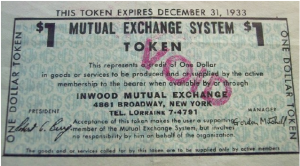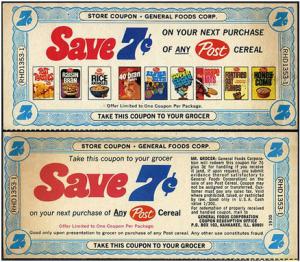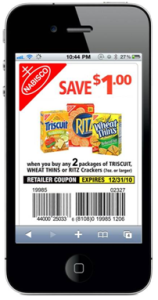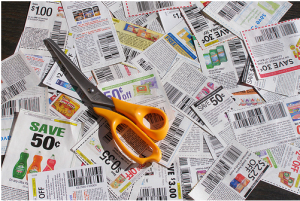All You Need To Know About Coupons
- Dec 30, 2014
- Featured
In today’s era of consumerism, it has become a routine habit of seasoned shoppers to use discount coupons. Whether you are shopping in-house or online, booking air tickets or movie tickets, making reservations at a hotel or a restaurant, coupons have become a way of life in order to get a few bucks off and push your savings in the right direction. After all, what are coupons but paper money?
However, this is not how coupons started off. Although coupons are used without a second thought today, they are a fairly a new concept and were introduced into the retail chain just about a 100 years ago. Before we move on to the history of the coupon industry, let’s get you acquainted with some interesting coupon trivia.
Did you know?
- September is celebrated as the National Coupon Month.
- 2012 marked the 125th anniversary of the coupon.
- The word coupon comes from the French word couper which literally means, ‘piece cut off.’
- The first known coupon is said to have been distributed in 1887. A druggist bought the formula for Coca-Cola and began distributing handwritten tickets for a free glass of Coke.
- Atlanta, the home to Coca-Cola and the first coupon, was ranked as 2011’s Most Frugal U.S. City, according to an online survey. Residents are seven times more likely to print coupons or save them to a store loyalty card than the average American city dweller.
- The cities of Orlando, Tampa, Nashville and Charlotte follow closely after Atlanta.
- Coupon redemption grew by 27% during “The Great Recession” of 2009. Between 2008 to 2012, $4 billion worth of coupons were redeemed on an average annually.
- 92% of coupons printed from the internet are redeemed.
- 89% of coupons redeemed are from newspapers.
- The no. 1 food based coupon used is for cereals.
- The no. 1 non-food based coupon is for toilet paper.
- 45% of coupons used are grocery-based, 42% are online coupon codes, 8% for restaurants and 5% are for other miscellaneous products.
- In 2013, consumers across the nation saved $3.7 billion using just coupons.
- A single consumer can save an average yearly amount of $10,000 using coupons.
- The top 5 coupon retailers in America are Walmart, Kroger, Target, Walgreens and Pulbix.
- Approximately 25 million Americans use mobile coupon apps each month. Mobile coupons are 10 times more likely to be redeemed than traditional coupons.
The Grand History of Coupons
The First Coupons (1887-1900)
In 1887, one of the partners of the Coca Cola Company, named Asa Griggs Candler, sky-rocketed the popularity of the beverage by introducing the first coupon into the American market. It was an absolutely original and unheard of advertising strategy and has helped garner mass-support for the product that lasts till today. The first coupon allowed the bearer to obtain a free drink at any authorised Coca Cola fountain or pharmacy.
The coupons were mailed to potential customers and were placed inside magazines. After the release of the coupons, more than 8 billion free Coca Colas were served to the public and by 1895, Coca Cola was available in every state of the USA.The coupons had arrived!
The Cereal Coupons (1900-1930)
It was not until C.W.Post created the first printed coupons in 1909, that coupons became a part of the mainstream marketing arena. He established 1 cent off coupons to sell Grape Nuts Breakfast Cereal. From then on businesses across the industry started using coupons to advertise their products.
The Great Depression (1930-1940)
The Great Depression brought about a serious economic crisis across the world, that originated in the United States. The period pushed the boundaries of how poorly the world economy can perform. When depression hit, people did everything they could to save every penny and that is exactly when coupons became a necessity, more than an opportunity, to save money. Coupons became a medium for frugal living and cutting off expenses as people struggled to purchase groceries they needed to survive on.
The 1940s
As the Great Depression slowly lifted, the coupon culture was left behind and gained further impetus thanks to its popularity. Chain supermarkets and grocery stores started offering coupons in order to attract customers and keep them away from neighbouring stores because of the growing level of competition.
The 1950s
In 1957, Chicago businessman Arthur C. Nielsen established the first-ever clearing house devoted entirely to the redemption of coupons. At the time of its inception, it was called the Nielsen Coupon Clearing House and then renamed to the Manufacturers Coupon Control Centre or MC3. This marked the beginning of the era of the coupon as a crucial part in the world of business.
By serving as a middleman between the manufacturers and the retailers, the NCCH helped manage the coupon redemption process and in the future, invent technology such as coupon redemption software to make it easier for manufacturers and retailers to produce and distribute coupons.
1960s-1980s
By 1965, it was reported that more than half of the American population was clipping coupons.
In 1968, Terry Loebel created Valpak, little blue envelopes with coupons for services within a neighbourhood. Valpak mailed 14 coupons to 20,000 families signalling the start of a national direct marketing company. Through the 70s and the 80s, the coupon clipping population steadily rose and by now, coupons started appearing in all almost all newspapers, magazines and periodicals.
Coupons and the Internet (1990-2008)
With the invention of the internet and the advent of the ecommerce industry, online coupons became a rage owing to their convenience and easy availability. Two types of online coupons are available- printable coupons, which can be downloaded and used at respective stores, and coupon codes, which can be copied and applied to online portals to avail discounts. This trend went on steadily for a while. September 1997 was celebrated as the first National Coupon Month in the United States to commemorate the coupon culture.
The Great Recession (2008-present)
During the Great Recession between 2008 and 2012, the coupon industry saw a sudden boost that it hadn’t seen since the early 1990s. Also, in 2008, with the growing popularity of smart phones, retailers launched mobile apps for coupons. There are also several apps available for scanning bar codes and coupon codes and to compare prices from different stores in order to get the cheapest available deals. Today, coupons are widely used through all possible mediums, be it print coupons in newspapers, online coupons or mobile coupons.
Types of coupons
Manufacturer Coupons
These are the coupons that you typically get out of the Sunday paper. Peelies, blinkies and coupons that you get in the mail are also normally manufacturer’s coupons. These are the most common type of coupons. The store does not take a loss if you use a coupon. They are reimbursed from the manufacturer plus $.08 for handling. Care needs to be taken to not cut the barcode or the expiration date off as they are no good if done so.
What Do Manufacturer Coupons Look Like?
Manufacturer’s coupons come in all sizes and designs, but there are certain design elements that most of them have for marketing and control purposes. This includes:
- The words “Manufacturer Coupon” will usually be on the top of the coupon.
- Usage terms describing how the coupon can be used, including any limits and expiration dates.
- An address to where the stores should send the coupons for redemption.
- One or two barcode images with a series of numbers.
Reliable sources of manufacturer coupons include:
- Trusted coupon printing sites (E.g. ChameleonJohn.com, etc.)
- Manufacturer websites and their Facebook pages
- In-store on specially marked displays as tearpad coupons or blinkies
- In magazines (E.g. Family & women’s lifestyle magazines)
Store Coupons
A store coupon is a coupon that is issued by the particular store. At the top it will say the name of the store and usually have their logo. These coupons are reimbursed by the store themselves. Store coupons can be combined with a manufacturer’s coupon. These make for very lucrative deals and hence are very popular.
What Do Store Coupons Look Like?
- Most store coupons will either have “Store Coupon” or the name of the store printed on the top of the coupon.
- You will also see store coupons with specific requirements that must be met in order to activate the coupon. For example, the terms on a store coupon may require that your total purchase is over a certain dollar amount before the coupon can be deducted.
Printable Coupon
These coupons are found on the Internet from popular coupon sites like ChameleonJohn.com. Some will be manufacturing coupons and some will be store coupons. You are usually allowed to print 2 of each coupon during the month and companies will reset the coupons at the beginning of each month.
Online retailers often refer to coupons as “coupon codes”, “promotional codes”, “promotion codes”, “discount codes”, “key codes”, “promo codes”, “surplus codes”, “portable codes”, “shopping codes”, “voucher codes”, “reward codes”, “discount vouchers”, “referral codes” or “source codes”. Internet coupons typically provide reduced cost or free shipping, a specific dollar or percentage discount, or some other offer to encourage consumers to purchase specific products or to purchase from specific retailers. Because paper coupons would be difficult to distribute and redeem, typically secret words or codes are distributed for consumers to type in at checkout. Marketers can use different codes for different channels or groups in order to differentiate response rates.
Catalinas
Catalinas (CCM): These are also called “check out” coupons. They are handed to you by the cashier with your receipt. They are incentives to shop with that same store again and buy the same products. Not only are Catalinas coupons but they can also be like cash. You might get a reward that you can use on your next purchase like cash. The phone number for the Calatalina Company if you have a problem is 1-888-826-8766.
Mobile Coupons
A mobile coupon is an electronic ticket solicited or delivered to a mobile phone that can be exchanged for financial discount or rebate when purchasing a product or service. Coupons are usually issued by manufacturers of consumer packaged goods or retailers, to be used in retail stores as part of a sales promotion. They are often distributed through WAP Push over SMS or MMS, through GEO Fencing technology or other mobile means. The customer redeems the coupon at store or online. In some cases, customers may redeem the mobile coupon at the point of sale. Some retailers may choose to forward the redemption to a clearinghouse for final processing.
What is unique about mobile coupons is the memory of information in the coupons often outlasts the expiration dates of the coupons themselves, triggering actual purchases at later dates. Researchers suspect it is driven by the engagement generated by the mobile device.
Mobile coupons are popular among U.S. fast-food customers. The primary success factors for the SMS campaigns are discount size, how the discount value is framed and the timing of the campaign. Many retailers also support the redemption of email and paper coupons via mobile devices.
How do coupons work?
The journey of a coupon is as follows-
- Manufacturer to coupon distributors.
- Coupon distributer to consumer.
- Consumer to store.
- Store to coupon clearinghouse for processing.
- Coupon clearing house send reports and coupons to manufacturer.
How does the coupon clearinghouse work?
At the end of the day the cashier adds up the currency they have accepted including the coupons. The coupons are then bagged and sent off to corporate; from there they are sent to a coupon clearinghouse. Coupons are not combined; they are processed store by store. The clearinghouse sorts the coupons electronically and by hand if the coupon cannot be scanned or is damaged. The clearing house then sends the coupons and the reports to the manufacturers. In some cases the manufacturer will submit payment to the clearing house and the store or they will pay the clearing house who in turn submits payment to the store.
Coupons and the way ahead
Coupons have paved a long, historic journey for themselves from over 100 years ago and will in all probability continue to do so in the future. The formats of coupon distribution and usage may change in the times to come, but customers have and always will vouch for discounts to encourage smart shopping and bigger savings. One thing is for sure, coupons are here to stay!





Leave a Reply